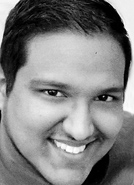Baroque torrents at the Lionel Wendt
The Chamber Music Society of Colombo (CMSC) relentlessly strives to offer discerning audiences quality music mostly comprising unfamiliar repertoire. Invariably such music is seriously classical and inherently elitist; it’s also arduously exacting to comment upon.
CMSC’s recent concert at the Lionel Wendt Theatre on August 30, was titled “The Baroque Tenor”. It staged music of the baroque era (roughly the period 1600 to 1750CE) and comprised several works that had drawn inspiration from Christian life and faith. So in the main, the evening’s corpus of music was profound and solemn. There were some exceptions.

Asitha Tennekoon
What struck me first was the elegantly produced programme. The attractive covers were strikingly colourful and the overall design had a look of quality. The programme notes were expansively annotated though the author’s name appearing as a sub-heading to the notes (instead of being at the end)was a bit obtrusive. But alas, in what I thought was a perfect souvenir was an inexcusable blemish.
It seemed a desecration that the programme’s front cover carried the venue’s name as“LIONEL WENDT THEATER” while the humble ticket I had purchased carried the English spelling for the word theatre. I am not prejudiced towards American spelling but the Lionel Wendt Theatre is Colombo’s cultural oasis and the hallowed refuge for public artistic expression for over half a century. Given that historical and cultural aura and identity, the evening’s venue deserved to be more venerably designated.
With one exception, the evening’s programme had listed works by composers from the baroque period––Handel, Albinoni, Hertel and Bach.
The exception was a cycle of songs titled “Songs of Hafez” composed by Stephen Allen after four poems written by a 14th-century Persian poet by the name of Hafiz. However before the concert commenced it was announced that this item would not be performed as the composer himself was “not available” to conduct it.
The evening’s programme kicked off with Handel’s overture to Agripinna. A sedate and yet rhythmically bounding beginning preceded a furious and violent Allegro; solo parts for the violin executed gaspingly if not tremulously invited the oboe to respond with short luminous bursts. There was perpetual motion until a long silence paved the way for a forlorn oboe to bring calm. It was high-intensity playing till then.
Next in the programme was the aria “His Mighty Arm” from Handel’s baroque oratorio Jephtha. It was a musical masterpiece and one of the earliest baroque writings to feature emotionally expressive arias for the tenor voice.
What seemed an inauspicious beginning caused no panic. The ensemble’s splendid playing was disturbed by a noise that was perceptibly loud; I soon discovered it was a snapped violin string.The hapless violinist (or violist) had to stealthily remove the remnants and wait till the next change to re-string her fiddle. But it was remarkable that the rest of the players carried on as if nothing was heard or nothing had happened. Mercifully it wasn’t the concertmaster who had to face the music from a broken string.
For tenor Asitha Tennekoon it must have been perhaps an extraordinary if not a challenging occasion. For one thing this was his debut with CMSC and for another he was to deliver vocally-taxing baroque stuff all evening. “His Mighty Arm” was not an easy assignment and understandably, the rapid, ornamental passages appeared somewhat to stretch his vocal stability, diction and ease of breathing. Overall, Asitha Tennekoon’s naturally relaxed and self-assured composure and his excellent interaction with a lively ensemble made it an engaging offering.

Lakshman Joseph de Saram
When it comes to repertoire, the CMSC has a distinctive search engine; it mines rare or inconsequential pieces of music that have great aesthetic appeal or smart technical novelty. Little is known of Handel’s cantata “The Praise of Harmony”which has been a castoff in substantial works of Handel such as his oratorio “Alexander’s Feast”. Yet it is a paragon of captivating charm.
For Asitha Tennekoon, Newburgh Hamilton’s poetry (after laureate John Dryden) was exalting:
…..“of Musick’s force the wonders show,
the most of Heav’n we here can know…..
It charms the soul, delights the ear, to it all passions bow”…
He sang the accompanied recitative and the arias with inspiration and fervour while the ensemble rendered the melody and its rich harmonies disarmingly.
Albinoni’s Sinfonia in C Major was given a glowing account. Somewhat unusually the first Allegro was the second movement of the work instead of being the first. The opening Largo had a longing, lullaby-like resonance and echoed sections of Pachelbel’s canon in D. The first Allegro’s lush layers of baroquian elements (fugal, contrapuntal) came to the fore with a spirited rendering by the string ensemble.
Hertel’s concerto in E flat major tested for the first time the trumpet and the oboe in a concertante-like role. Quite often I find the notes of the ‘Sri Lankan oboe’seem to be eternally in search of the pitch. I do not know if this reflects a poor quality instrument, a flaw in playing technique or simply a subjectivity in my hearing. The combined sonority of the trumpet and oboe can be delightful in any orchestral setting. Here the concerto’s overall impact was restrained by the struggle for togetherness between the trumpet and the oboe.
Bach’s cantata BWV 55 set for solo tenor was a fitting end to the evening’s programme. Asitha Tennekoon by then had carried a major workload and two arias and two recitatives of the cantata still remained on his plate. In the same way that a violin’s tone gets richer and richer with usage, his voice quality was more agile, resonant and flowing and the breathing was seamless.
A wailing and imploring virtuosic flute enveloped the ensemble’s evocative polyphonic sounds; was there in it a contemplation of the plight of man’s sinfulness, I wondered.
Amidst all this, seated right behind the stage was a small row of choristers whose turn to sing had been usurped by the seemingly unending recitatives and arias.They waited and waited and so did the audience.
If Bach’s inclusion of a chorale at the end of this cantata seemed an afterthought, this miniature piece made the most memorable moment of the concert. I haven’t heard live such glorious singing here from a handful of singers that was so angelic, serene and uplifting. The 58-year-old Colombo Philharmonic Choir’s participation was the jewel in the crown of CMSC’s rigorous performance of profoundly serious music.
Gerald Cooray, Lylie Godridge smile; to thee we sing.
comments powered by Disqus

